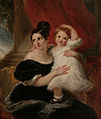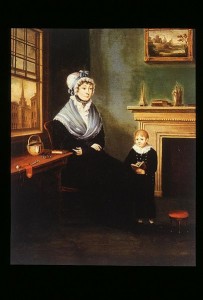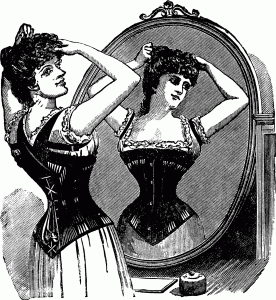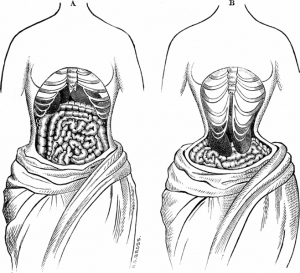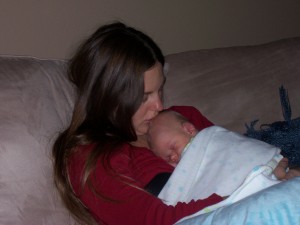Bibliographic Essay
The following essay examines Walt Whitman’s criticism from 1973-2004 in relation to motherhood, feminism, and the woman reader. Four articles discuss Whitman’s relationship to his mother. Six articles debate if Whitman’s poetry reveal feminist support. Two articles discuss Whitman’s relationship with the woman reader. Through this, one can view the ambivalence surrounding Walt Whitman’s relationship with his mother and women.
Motherhood
Barbara Schapiro’s, “Shelley’s Alastor and Whitman’s Out of the Cradle: The Ambivalent Mother” introduces the reader to a psychological approach to understanding Whitman’s relationship with his mother. Schapiro counters Gustav Bychowski and Edwin Miller who see the bird in “Out of the Cradle Endlessly Rocking” as a representation of an oedipal triangle (254). To her, “the bird song portrays an essentially loving mother, but a mother who is specifically withdrawing her love to the bird/boy” (Schapiro 255). Schapiro provides insight on the complex relationship between Whitman and his mother. Perhaps the withdrawing of love is Whitman’s conflict over his mother’s disinterest in his poetry. Unfortunately, Schapiro fails to provide necessary biographical information in understanding her hypothesis. Further research into Whitman’s relationship with his mother could provide a greater understanding of his poetry regarding the maternal and its position in the Women’s Rights Movement.
“Whitman’s Impossible Mother” by Steven A. Wartofsky describes Whitman as a man grappling with the voice of the Other. The Other is described as society’s patriarchal voice. Wartofsky analyzes “As I Ebb’d with the Ocean of Life” to determine that Whitman is trying to empower the voice of his mother. This voice represents both himself (possibly his homosexual identity) and his mother’s voice repressed by patriarchy. Wartofksy notes that Whitman’s mother’s voice is finally freed from the oppressive Other however Wartofsky writes, “But that’s the catch: the fierce old mother never really says anything in ‘As I Edd’d with the Ocean of Life” (206). This article benefits the reader in showing Whitman’s revolutionary behavior. He is a man trying to speak out against male dominated society. However, the reader is left perplexed with the knowledge that the mother did not speak. Once again, an ambiguous Whitman is revealed. Is he a revolutionary or not? Future work should analyze the ambivalence presented in Whitman’s work to determine if there are certain points which he stresses more often than others. Perhaps a researcher could determine his true thoughts regarding women and a patriarchal society by tallying remarks in opposition of and in support of certain beliefs.
Arthur Wrobel in “Nobel American Motherhood” presents Walt Whitman not as a revolutionary feminist but as a poet influenced by the middle class ideals of motherhood. Wrobel details various thoughts regarding nineteenth century women. Inspired by eugencics and phrenologists Wrobel writes that, “The ideal woman according to Whitman, is a willing agent of republican America’s racial destiny” (19). This article suggests that Whitman’s esteem for motherhood originated not from securing women’s rights but from a desire to attain a strong nation. Although Wrobel initially contests D.H. Lawrence’s criticism that Whitman’s portrayal of women reveals, “muscles and wombs: functional creatures-no more,” (7) the article suggests Whitman’s women were used only as tools in creating his ideal nation. This criticism follows others in that in conveys Whitman as influenced by the ideals of his time. On the other hand, it presents a new image of the poet desperate to create a utopia. Future analysis of Whitman’s work could focus not on his relationship with his mother but on his identity as a mother seeking an ideal mate to create an ideal nation.
“Whitman and Motherhood: A Historical View” by Myrth Jimmie Killingsworth provides an understanding of Whitman’s portrayal of motherhood. Killingsworth questions whether Whiman’s women support the feminist cause or abide by nineteenth century ideals of motherhood. He analyzes “Democratic Vistas, A Woman Waits for Me”, “On the Beach At Night Alone,” “I Sing the Body Electric,” “As At Thy Portals Also Death,” and “Out of the Cradle Endlessly Rocking” to determine that “The theme of motherhood as it is treated in Whitman’s poems, whether good or bad, is decidedly Victorian” (42). Killingsworth also connects Whitman’s feelings toward motherhood to eugenicists and phrenologists. Again the reader sees Whitman greatly admiring motherhood for reproductive purposes as “She holds the key to sex, life, love, and death” (35). Killingsworth’s comprehensive analysis of Whitman’s poems and description of nineteenth century sentimentalism fosters a greater understanding of Whitman’s ideal of motherhood. Future avenues of research could examine Whitman’s social and phrenological influences on his image of the ideal woman and mother.
Feminism
Kay Reinartz asserts that Walt Whitman is indeed a feminist in “Walt Whitman and Feminism.” Although Whitman was not a political activist, she claims that he “was a feminist in the sense that he endorsed the theory of political, economic, and social equality of the sexes” (127). This article benefits the reader in that it aids in understanding of Whitman’s relationship to his mother and the Quaker religion which influenced his belief in the equality of women. Reinartz explains that Whitman’s mother may have “influenced Whitman’s attitudes toward women by her failure to demonstrate an intelligent sympathy for, or interest in, Whitman’s poetry” (131). Reinartz unfortunately only analyzed “Democratic Vistas” to evidence Whitman’s belief in feminism. Though supportive of her claim, she could have included more poems. In the future, one could analyze Whitman’s desperate need for his mother’s approval and its relationship to eagerly seeking a women readers (see below).
In “The American Woman in ‘Song of Myself’” Judy Womack describes each instance in the poem in which Whitman represensts women as “equals, as laborers, as lovers” (67). Womack demonstrates Whitman’s understanding of “the force which women have on society and he lauds them for the compassion which makes them so necessary to all” (72). This acknowledgement of Whitman reinforces his feminist beliefs. On the other hand, Womack neglects to analyze what each line would mean for Whitman, nineteenth century society, or feminists. Future work could compare each section of “Song of Myself” in relation to the Women’s Rights Movement.
Muriel Kolinsky in ‘”Me Tarzan, You Jane?’: Whitman’s Attitudes Toward Women from a Women’s Liberation Point of View” counters critics who doubt that Walt Whitman’s feminism. She examines numerous poems from Leaves of Grass to conclude that, “even when Whitman extolled motherhood, he was probably more of a feminist, a believer in free choice for women” (158). This article was useful in that Kolinsky analyzes several poems which direct the reader to Whitman’s admiration for women. Of particular interest, Kolinsky notes Whitman’s “attack” on the word lady in “Democratic Vistas” and praises Whitman for making the woman’s body acceptable in “I Sing the Body Electric” (162). Kolinsky however fails to address the question “does Whitman restrict women to stereotype occupations” (160-161). Kolinsky writing in 1977 accepts Whitman as a feminist, future research could compare twenty first century feminists to Kolinsky’s analysis of Whitman.
In “Writing the Male Body: Naked Patriarchy and Whitmanian Democracy” Robyn Wegman adamantly opposes any notion of Whitman as a defender of women. She believes he is “phallocentric” and that his ideal image of motherhood “confines the female to a use-value contingent on her relation to the male and, significantly, the phallus” (18). Wegman presents an opposing view to those who see Whitman as the equalizer of men and women. It is useful to read Whitman’s poems with this background of phallocentrism. It is unclear though in which context Wegman is writing. Could she be examining Whitman’s poetry by feminist standards set forth at the time of her 1987 writing? In the future, one could examine this hypothesis of Whitman as an egotistical man concerned with the power of the phallus and using woman only as a means to achieve his ideal America.
Harold Aspiz describes Eliza W. Farnham’s book Woman and Her Era in “An Early Feminist Tribute to Whitman.” Aspiz states that in Farnham’s book Whitman “is hailed as the precursor of a new feminist conscience” (404). However this statement is contradicted in the article when Aspiz comments that Whitman’s name appears only three times in Farnham’s work and “none of them in the body of the text” (407). This article proved useful in presenting insight on a feminist contemporary of Whitman. Aspiz writes that Farnham’s book “is predicated on the hypothesis that woman is nature’s most highly evolved organism, physically, and spiritually, because she is charged with the highest function” (405). Although Whitman and Farnham share similar thoughts regarding women Aspiz’s contention that Woman and Her Era is a tribute to Whitman fails to be proven in this article. Future research should include a comparative study of Farnham’s beliefs, Whitman’s poetry, and the beliefs of other nineteenth century feminists.
Diane Middlebrook’s “Making Visible the Common World: Walt Whitman and Feminist Poetry” compares Walt Whitman to two feminist writers: Susan Griffin and Adrienne Rich. Middlebrook writes that Whitman, Griffin, and Adrienne Rich share a common task of finding a space of their own and a woman audience. Middlebrook explains that feminist writers use “Whitman as a model and precursor, feminist writers have identified an analogous need to free women from the literary culture long dominated by men as writers, critics, and publishers” (15). This article proved useful in gaining a foundational knowledge of the task of feminist writers and it was inspiring to view Whitman as a model for which feminists could learn. Middlebrook does not however indicate that Whitman was a feminist. This foundational knowledge could be used in future work to inspire other feminist writers. One could analyze Whitman’s pleas for unity in comparison to other feminist writers ultimately linking the two.
The Woman Reader
Lottie L. Gutty’s “Walt Whitman and the Woman Reader” describes the important role a woman audience played to Walt Whitman. Like the feminist authors mentioned above, Whitman sought a female audience. Whitman spoke to women encouraging self-esteem, equality with men, and treated them as adults (108). Guttry explains, “The metamorphoses and expressions of sympathy reinforce the poet’s statements of love with evidences of real concern and understanding of women” (107). Guttry portrays Whitman as an advocate for women. According to Guttry, Whitman’s approach to women was counter-Victorian. He wanted to release them from the middle class ideal of a weak woman in need of protection. Guttry fails to incorporate Whitman’s feelings toward motherhood and his belief in strong mothers. These maternal feelings had a great impact on one woman reader as evidenced below in Anne Gilchrist. Future studies could examine a contemporary young woman’s reading of Whitman to determine if they are as empowered as Whitman would have wanted them to be.
In “Lover, Mother, Reader: The Epistolary Courtship of Walt Whitman” Suzanne Ashworth analyzes the correspondences between Anne Gilchrist and Walt Whitman to reveal Whitman’s influence on a woman reader. From this critique, one views Whitman as a deeply in awe of the domestic woman. Gilchrist uses this fascination to present herself more favorably to Whitman. Ashworth writes, “Anne courts Whitman with domestic idylls-with visions of homebound happiness and normative gender roles” (186). Ashworth points out the influence of nineteenth century society’s Whitman’s poetry. She describes, “Anne’s conception of herself as a mother draws heavily on the strains of mother-worship that pervaded both her culture and Whitman’s poetry” (188). Whitman desperately sought women readers and Gilchrist represented the intellectual, domestic, and sensual woman who understood Whitman. Future research should analyze contemporary women’s feelings towards Whitman’s poetry. Will the Whitman as read by a twenty first century evoke the same emotions as that of nineteenth century Anne Gilchrist?
Works Cited
Ashworth, Suzanne. “Lover, Mother, Reader: The Epistolary Courtship of Walt Whitman.” Nineteenth-Century Contexts 26.2 (2004): 173-97. Print.
Aspiz, Harold. “An Early Feminist Tribute to Whitman.” American Literature: A Journal of Literary History, Criticism, and Bibliography 51.3 (1979): 404-9. Print.
Guttry, Lottie L. “Walt Whitman and the Woman Reader.” Walt Whitman Review 22 (1976): 102-10. Print.
Killingsworth, Myrth Jimmie. “Whitman and Motherhood: A Historical View.” American Literature 54.1 (1982): 28. Print.
Kolinsky, Muriel. “Me Tarzan, You Jane: ‘”Me Tarzan, You Jane?’: Whitman’s Attitudes Toward Women from a Women’s Liberation Point of View.” Walt Whitman Review 23 (1977): 155-165. Print.
Middlebrook, Diane. “Making Visible the Common World: Walt Whitman and Feminist Poetry.” Kenyon Review 2.4 (1980): 14-27. Print.
Reinartz, Kay F. “Walt Whitman and Feminism.” Walt Whitman Review 19 (1973): 127-37. Print.
Schapiro, Barbara. “Shelley’s Alastor and Whitman’s ‘Out of the Cradle’: The Ambivalent Mother.” American Imago: A Psychoanalytic Journal for Culture, Science, and the Arts 36 (1979): 245-59. Print.
Wartofsky, Steven. “Whitman’s Impossible Mother.” Walt Whitman Quarterly Review 9.4 (1992): 196-207. Print.
Wiegman, Robyn. “Writing the Male Body: Naked Patriarchy and Whitmanian Democracy.” Literature and Psychology 33.3-4 (1987): 16-26. Print.
Womack, Judy. “The American Woman in ‘Song of Myself’.” Walt Whitman Review 19 (1973): 67-72. Print.
Wrobel, Arthur. “‘Noble American Motherhood’: Whitman, Women, and the Ideal Democracy.” American Studies 21.2 (1980): 7-25. Print.
Tags: bibessay




